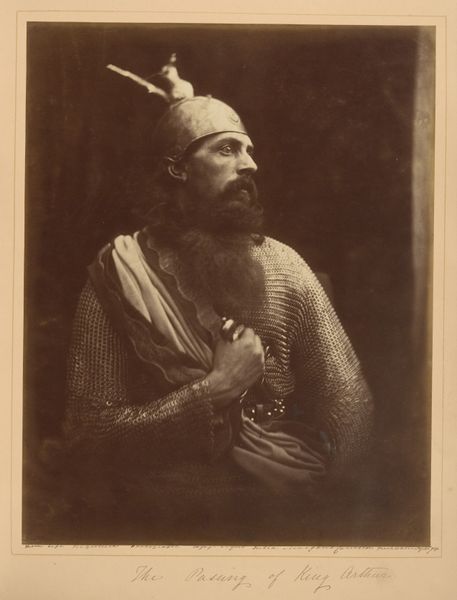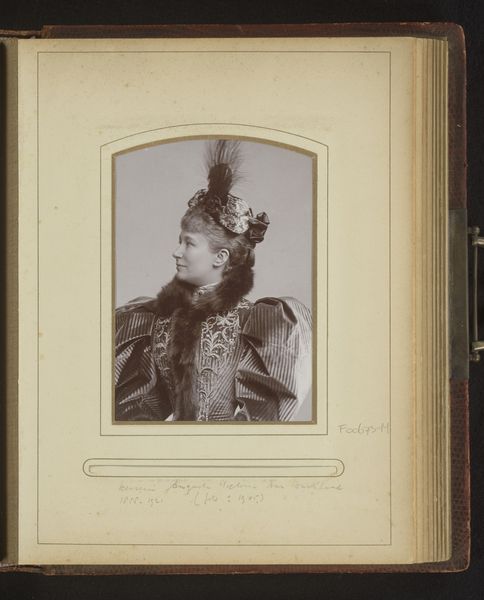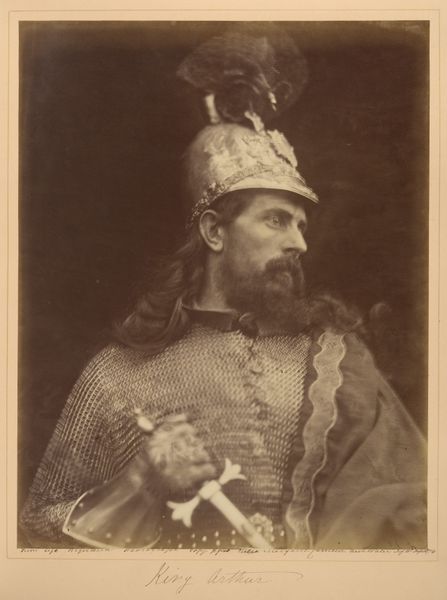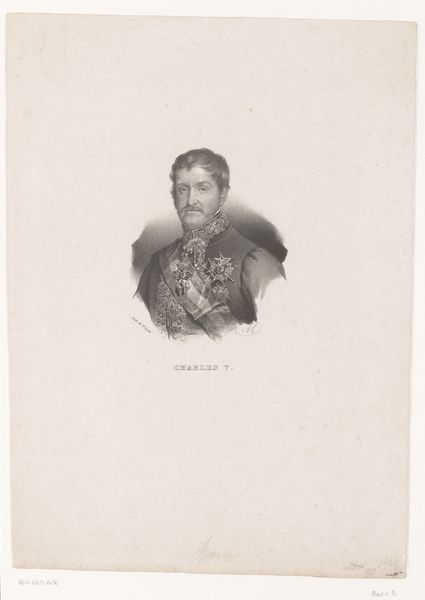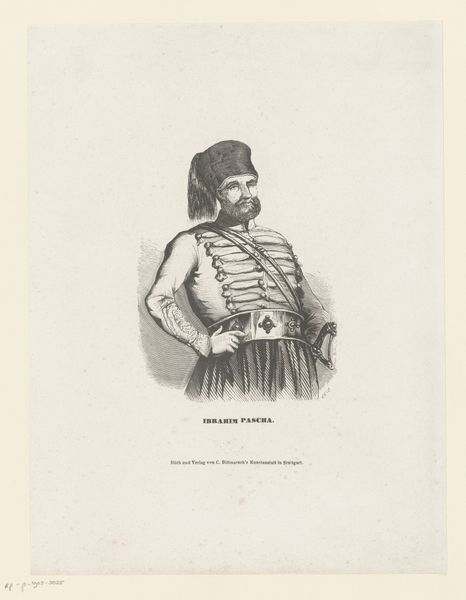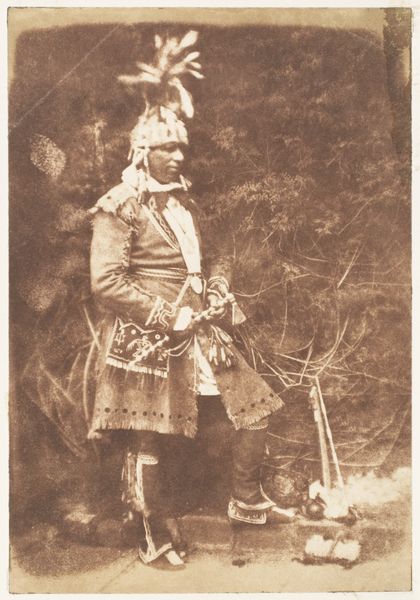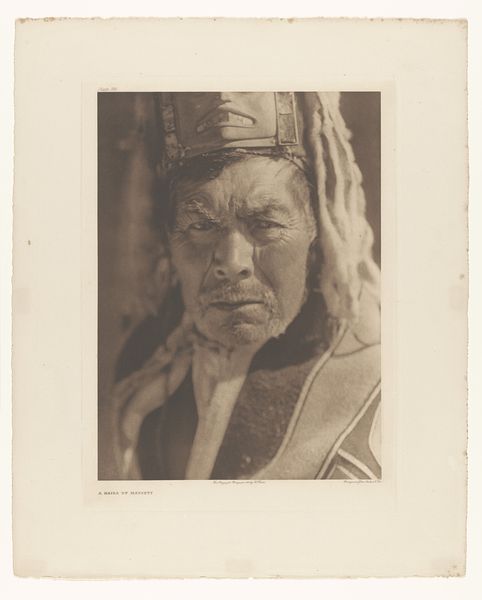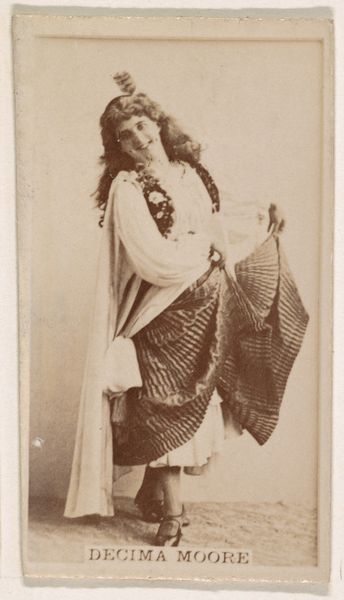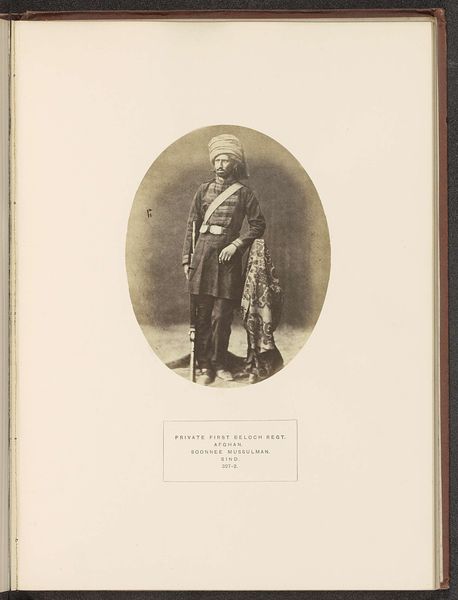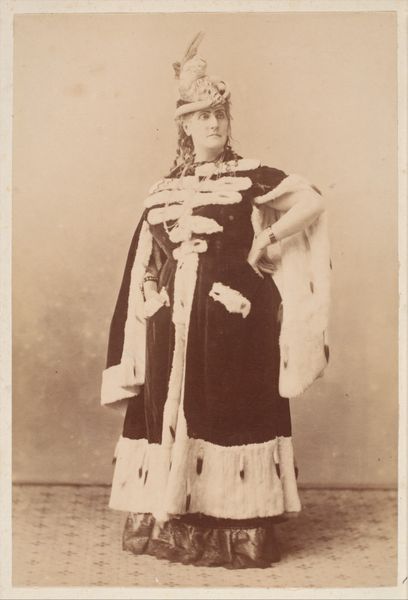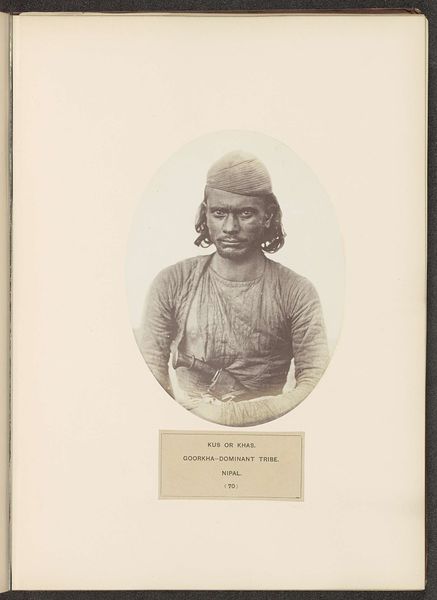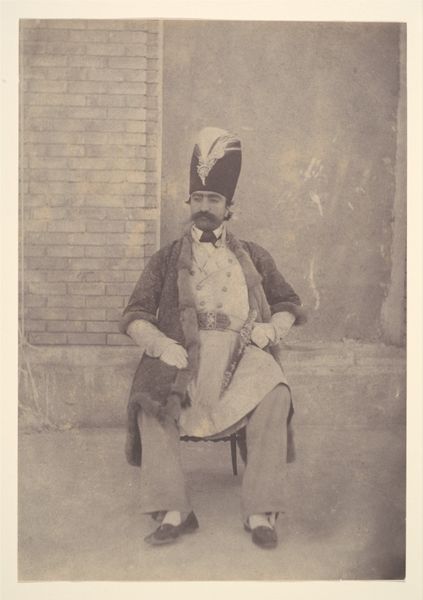
photography, gelatin-silver-print
#
portrait
#
photography
#
gelatin-silver-print
#
history-painting
#
pre-raphaelites
Dimensions: 35.2 x 25.2 cm. (13 7/8 x 9 15/16 in.)
Copyright: Public Domain
Curator: This gelatin-silver print is Julia Margaret Cameron's 1874 photograph, "The Passing of Arthur," currently residing at the Metropolitan Museum of Art. Editor: My first impression is of the striking luminosity given the hazy texture. It reminds me of a painted medieval miniature, more than a photograph. The monochromatic, muted sepia lends a timeless quality. Curator: Indeed. Cameron was very interested in aligning her photography with pre-Raphaelite aesthetics and literary themes. It's thought she produced this portrait while considering Tennyson's *Idylls of the King*, which deals with Arthurian legends. The very choice of subject matter – a fallen king, betrayed and on the verge of death – would have resonated with contemporary concerns about the decline of Empire. Editor: Semiotically, there's the chainmail, the helmet and tunic, all creating meaning relating to a certain archetypical leader—a medieval King of sorts. The slightly soft focus is doing something, as well. It seems designed to elicit an emotional response. What I find compelling is the textural contrast: the metal of his attire against the smoothness of his face. Curator: Cameron consistently sought to legitimize photography as high art and frequently drew from literary, biblical, and historical narratives to elevate her subjects. Notice how the subject’s vulnerability challenges traditional portrayals of masculinity. Editor: I think you're right. There’s definitely an undercurrent of sensitivity at play in how Cameron composes and softens the scene—very unconventional when contextualized with the tropes and imagery of historical portraiture and staged photography. Curator: Understanding Cameron's art requires considering the Victorian context of British colonialism, too. The picture romanticizes notions of chivalry while possibly critiquing their inherent limitations in a changing world. The picture isn't just beautiful to behold; it’s a historical text about how Britain saw itself at the time. Editor: It seems the artistic power lies in these unresolved tensions between visual codes, technique, historical sources, and artistic intention. Thanks to this discussion, my appreciation for Cameron’s technical and artistic achievement has only increased.
Comments
No comments
Be the first to comment and join the conversation on the ultimate creative platform.
